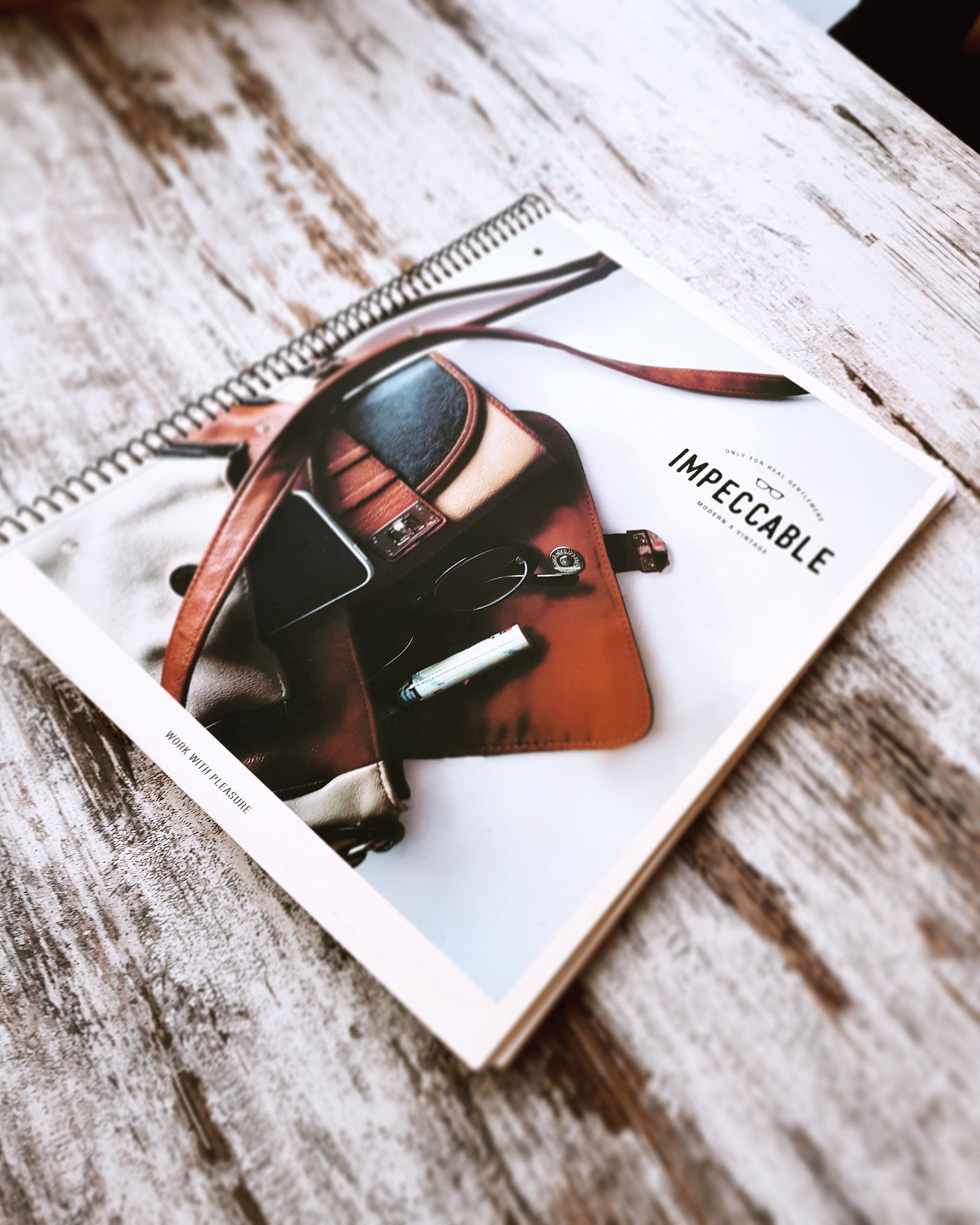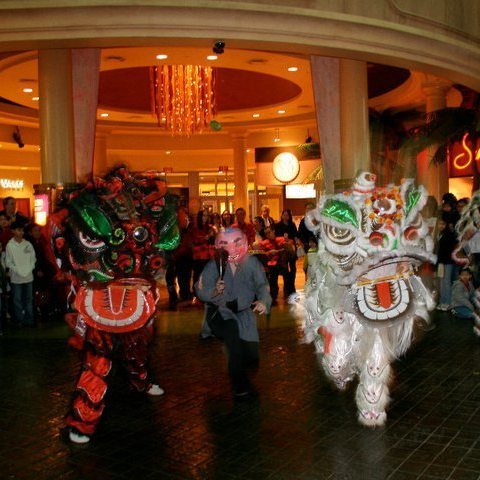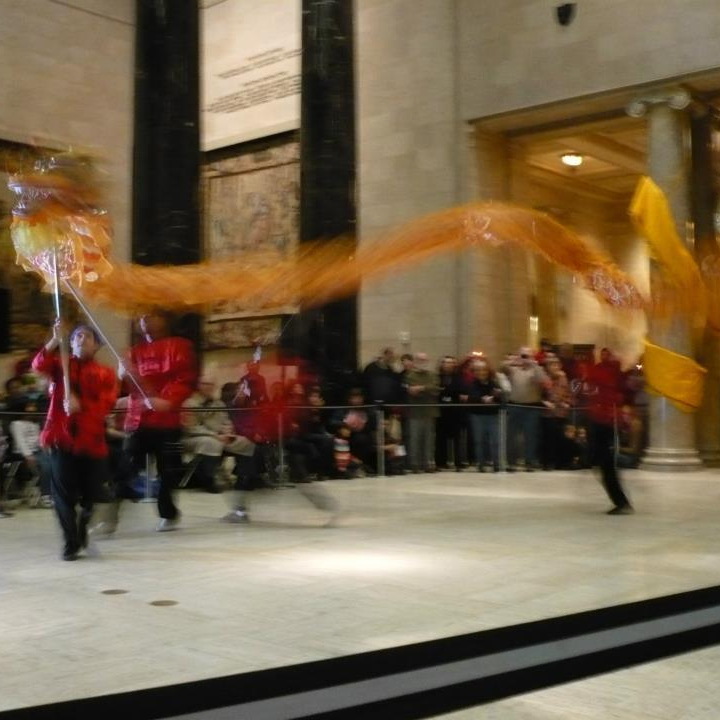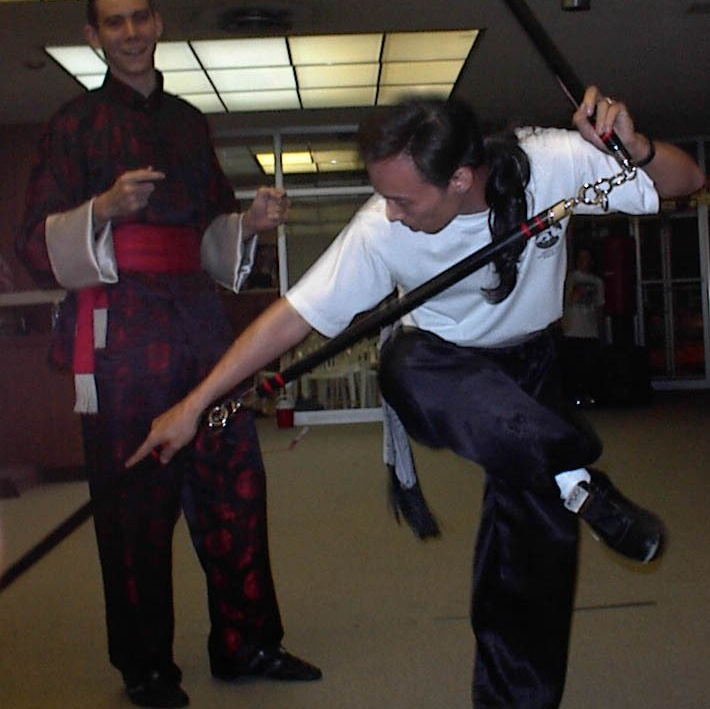LION DANCE TEAM
"5 TIME TOP 10 LION DANCE TEAM IN THE US"
As a traditional Kung Fu school, we offer Lion dance, Dragon dance, and demo team services.
Lion Dance
We offer a wide range of options from traditional blessings to freeform performances based on the clients need.
Dragon Dance
We offer both small and large dragon dances. Great for celebrations, exhibitions, and parades.
History and Traditions
The lion dance is an important tradition in China. Usually the dance is part of festivities like Chinese New Year, the openings of restaurants and weddings. If well-performed, the lion dance is believed to bring luck and happiness.
Although lions are not native in China, they came to this country via the famous Silk Road. Rulers in what is today Iran and Afghanistan sent lions to Chinese emperors as gifts in order to get the right to trade with Silk Road merchants. The lion dance dates back to the Han Dynasty (205 B.C. to 220 A.D in China) and during the Tang Dynasty (716-907 A.D.) it was at its peak. It was particularly performed during religious festivals. The lion dance was not only introduced in China, but also in Korea and Japan, where lions are not native as well. The dances are not exactly the same in these countries, but the symbolism is quite similar.
Every year Chinatown marks the beginning of Chinese New Year with many different festivities. The main attraction is the Lion Dance, a Chinese tradition for thousands of years. The Chinese consider the Lion as an animal symbolizing power, wisdom and good fortune. A person who performs the dance usually is one who has studied Chinese Boxing/Kung Fu and is very proficient at it. Lion Dance is considered a mandatory part of classical or traditional Kung Fu. Those who practice Kung Fu are usually very good at the dance because the lion dance utilizes the footwork, body movements, balance, and agility that is required in Kung Fu. In general, there are two major types of Lions. The Northern Lion dances with an acrobat and utilizes very light playful motions. While on the other hand the Southern Lion dances with a playful Buddha and utilizes more restrictive powerful motions. The Southern Lion also performs a variety of tricks as does the Northern Lion requiring an abundance of balance and agile footwork. The Lion's head is made of paper mache and wood, elaborately painted and decorated with strings, fringes, tassels and bells. The head can sometimes weigh more than 50 pounds. Attached to the head of the Southern Lion with a red ribbon is a long piece of colorful material that represents his body under which the person portraying the body and tail must crouch. The Northern Lion body and tail is actually a uniform that both dancers wear and is usually bright yellow with an abundance of tassels.
Two types of Southern Lion's seen mostly are the old and the young Lion. The Old Lion is multicolored and has a long white beard. He usually serves as the trademark of an older more established school. The young lion tends to have black hair and a shorter black beard and is representative of a school that does not have such a standing in the community. The young lion is very aggressive and always wants to fight. Whenever he meets an old lion he tries to pick on him, but the old lion is more docile and does not fight.
The lion is accompanied by musical instruments such as a drum, large and small cymbals and gongs. The drummer must be very skilled and must know which drum beat goes with each part of the dance such as when the lion is happy, sleepy, mad, scared or curious. An interesting role to play is that of the Big Headed Buddha or "Dai Tou Fut". The Buddha is know as a Monk, Funny Man or Laughing Buddha. The actor wears a pink mask with a large smile, and has two props: a palm leaf fan and a head of lettuce. He teases and plays with the lion using the lettuce, which is called the "Chiang". The lion tries to catch the monk so he can eat his Chiang, which denotes good luck. The actor must perform almost like an acrobat, doing cartwheels and jumps and a variety of Kung Fu moves. The lion, depending upon his mood will either play with, bite or kick the monk around.
There are various methods of playing the lion dance. One can be called free-style, in which the dancers improvise and make up the dance as they go. This is where the skill of the drummer plays an important part. This is the method used in a parade at New Year when the lion pays a visit to stores and homes. The visit, called the "Pai", brings good luck. Those who are visited may put out a Chiang, which could be a piece of lettuce or a roll of money, or it could be a traditional puzzle such as filling a dish full water. When you come upon the particular puzzle, you must know how to solve it. For instance, if there is a dish of water with coins at the bottom, it is proper to take a certain number in order to fulfill the traditional action which brings good luck. You must know how to solve the puzzles correctly if you are to show the quality of your lion and school. During the old days in China, a school might test the quality of another school's Kung Fu by testing their lion. The Chiang might be on top of a pole or building and you must figure out how to get it. If you didn't think you could, you would pass it up, but this meant that your skill was not good enough to meet the test.
The next method of dance is the set method or "Traditional Method". This set method tells the story of the origins of the lion. The lion, in Chinese mythology originated in Heaven, where it was very mischievous and created a great deal of trouble. The Jade Emperor became furious with the animal for being so bothersome. He cut off the lion's head and threw both the head and the body down to earth to rot. However, the Goddess of Mercy "Kwan Yin", seeing the poor lion felt very sorry for it and decided to help. She sent an enchanted red ribbon, which can be seen today on the horn of the lion's head, to tie it back on. The red ribbon also has power to frighten evil spirits, and for this reason the lion became especially powerful. Another part of the lion's power comes from a mirror that is located on his forehead. The mirror is there so that if any evil spirits confront him, they would see their own reflections and be frightened away.
After the Goddess of Mercy restored the lion, she offered to help the lion return to heaven. She referred him to a Buddha who owned a type of grass called "Ling Chi", the only kind of grass that would restore the lion's strength. There was one catch, as the lion soon found out. The Buddha kept all the grass to himself, for he too wanted to go to Heaven. So when the lion approached him for some, he refused. The lion was determined to have some of the grass. He waited until the Buddha went to sleep. Before the lion ate any of the grass, there was a ritual that he followed. First he bowed three times: one for Heaven, one for Earth, and one for Man. He bows to each to get their blessings. When he is finished eating as much as he can, he feels drowsy, for the grass is strong, and he falls asleep. When he awakens, he realizes that he has retained his full strength, and thus his dream is fulfilled. Again he bows three times and with his newly found power, returns to his rightful place in Heaven.
Quite often people observing the dances think that they are looking at dragons. The main difference between a "Lion Dance" and "Dragon Dance" is that the "Dragon Dance" is performed with more than two people.
All the services you need,all in one place.
We offer a wide range of services to meet every type of need and performance.
The "Shaolin Lo'Han Pai Lion Dance Troupe" has evolved throughout the past thirty (30) years and is considered to be one of the most experienced, respected and sought-after demonstration teams in the entire Midwest..
Multiple Lions & Styles Available
The "Shaolin Lohan Pai Lion Dance Troupe” is skilled with various types of Lion Dances. Each ‘Lion Dance’ will tell a different story. From what we understand... to date we are the only Team that uniquely blends the Traditional Northern Lion and Taiwanese Lion in a mock battle dance. It is a very intriguing performance to watch.
Unlike most other “Lion Dance Troupes” in the area, we have many different lions! In fact we have a great deal to choose from. More than any other team within the Midwest! Each lion has its own unique name, dance and personality. We are skilled in the performance of "Dragon Dances" and "Southern Lion Dances" with bold Drums, Cymbals and Gongs! Our Weapon Demonstrations are fast, exciting and extremely pleasurable to watch. While you are holding your breath… you can almost feel the danger!
Lion Dance
Inquire for pricing
Check Availability Below
Perfect for both small and large events, inside and out.
Dragon Dance
Inquire for pricing
Check Availability Below
Typically used for larger shows both inside and out. A dragon dance can be a beautiful spectacle of rhythm and synchronized movements
Demo Team
Inquire for pricing
Check Availability Below
Great for any type occasion needing an eye catching performance.
Interested in our services? We’re here to help!
We want to know your needs exactly so that we can provide the perfect product or service. Let us know what you want and we’ll do our best to help.






